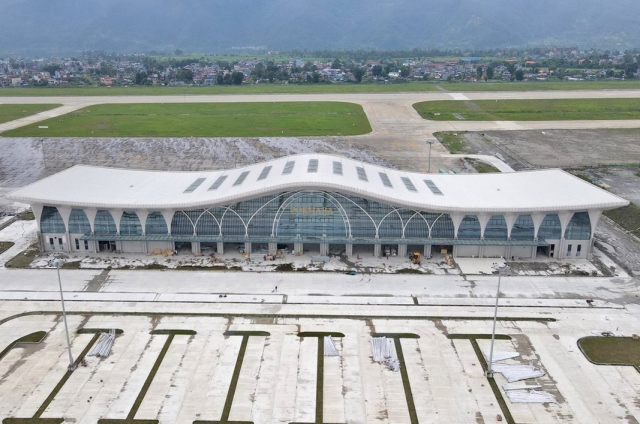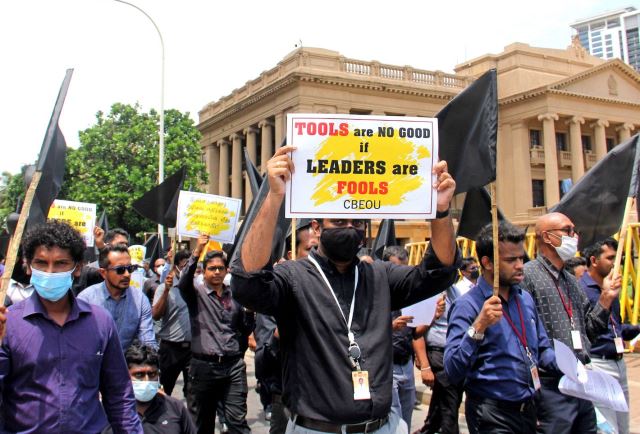Ahead of the inauguration of Nepal’s new Pokhara airport, in a surprise announcement, the Chinese Embassy in Kathmandu has tweeted, “This (Pokhara airport) is the flagship project of the China-Nepal Belt and Road Initiative (BRI) cooperation,” writes Anil Giri, in The Kathmandu Post.
Notably, Nepal Prime Minister Pushpa Kamal Dahal on Sunday inaugurated the country’s third international airport.
“The Pokhara International Airport has been inaugurated today. With this, the city now is in connection with the international market,” Dahal announced.
The Chinese Embassy tweet comes at a time when Kathmandu reiterated that no project under Beijing’s Belt and Road Initiative has been signed and Nepal and China are working to finalize the text of project implementation under the BRI, reported The Kathmandu Post.
After Nepal and China signed the framework agreement on BRI in 2017, Nepal initially selected 35 projects to be undertaken under Chinese President Xi Jinping’s flagship connectivity project.
Later, upon Beijing’s request, the total number of projects was whittled down to nine with Pokhara airport off the list. The government signed a USD 215.96 million soft loan agreement with China in March 2016 for the construction of the new airport in the lake city, said Giri.
The loan agreement between the Civil Aviation Authority of Nepal and China EXIM Bank does not mention the BRI.
At least three officials from the Ministry of Foreign Affairs, Ministry of Finance, and Ministry of Tourism told the Post that loan negotiations for the project had begun before the BRI was conceptualized in China.
The Chinese Embassy’s claim, therefore, is their own interpretation, which the Nepali side does not own up to, they said, reported Giri.
Even when the project completion ceremony of the Pokhara airport was held in Kathmandu during Chinese Foreign Minister Wang Yi’s visit in March last year, there was no mention from either side of BRI in connection with the airport.
If the Chinese Embassy says that this airport is built under BRI, this is their definition, a foreign ministry official said. “What we have agreed as of now is that China will fund two other projects under the BRI.”
“Pokhara airport was conceived of long ago and as per our rather in-depth conversations with the Chinese side, it does not fall under the BRI framework,” the official added.
“But the thing is, now, all kinds of Chinese assistance either in the form of loan or grant, or any project undertaken or completed by the Chinese, are being defined as falling under the BRI. As per our definition, this particular project does not fall under the BRI framework.”
The previous Sher Bahadur Deuba government communicated to the Chinese side that Nepal does not want loans and preference would be given to grants considering the size and nature of Nepal’s economy said, Giri.
If unavoidable, a loan should come with the interest on par with a multilateral lender or not exceed one percent per annum. In most cases, the interest rate of projects under the BRI is two to four percent. The Deuba government also made clear that Nepal is not in a position to take commercial loans to fund the project, reported The Kathmandu Post.
The Nepali side is also looking for a similar arrangement for the repayment of loans under the BRI, extending the period to 40 years and beyond. Nepali officials have also called for fair and open competition among the bidders for BRI projects.
Speaking with journalists on April 22, 2022, outgoing Chinese ambassador Hou Yanqi said the BRI consists of both grants and commercial loans.
“It is based on a cooperative modality that includes grants and commercial cooperation,” she said.
Hou said that many of the projects that China is currently building in Nepal fall under the BRI framework.
“This (BRI) is a long project. The projects that are being constructed in Nepal under BRI have three modalities. First, it is like Gautam Buddha Airport in Lumbini where ADB has invested and Chinese contractors have worked. Second, the modality of Pokhara Airport where China’s commercial loans and grants are there and the construction company is also Chinese,” Hou said.
“And the third modality is like the Tribhuvan International Airport in Kathmandu. The responsibility of improving this airport has been given to a Chinese company and the cost will be borne by the Nepal government.”
In bilateral documentation, none of these projects has gotten grants or loans earmarked BRI, finance ministry officials said, reported The Kathmandu Post.
“Publicity is one thing but in documentation or while signing the loan negotiation or negotiating the projects, the Chinese side never said Pokhara Airport falls under the BRI,” the finance ministry official added.
The Chinese Embassy in its press note has further said, “The new airport is designed and built in accordance with the standards of China and the International Civil Aviation Organization, which reflects the quality of Chinese projects, symbolizes the national pride of Nepal, and becomes a remarkable sign for China and Nepal to jointly build the Belt and Road Initiative.”
“In March this year, State Councillor and Foreign Minister Wang Yi visited Nepal and attended the completion ceremony of the construction … of the airport. Several prime ministers of Nepal also visited and promoted the project construction,” the embassy said.
A joint secretary at the Ministry of Culture, Tourism and Civil Aviation said that loan negotiations for the project had begun in 2008, ruling out the BRI component in the airport.
Former Nepali ambassador to China Leela Mani Paudyal said it is difficult to determine which project falls under the BRI, reported The Kathmandu Post.
“I don’t know whether this particular project falls under the framework of BRI or is funded under the BRI scheme. Of late, all Chinese investment–grant or loan–is tagged as BRI cooperation.”
By this definition, this particular project may fall under the BRI but, again, there is no clear demarcation between a BRI and a non-BRI project, said Paudyal. (ANI)
Read More: http://13.232.95.176


